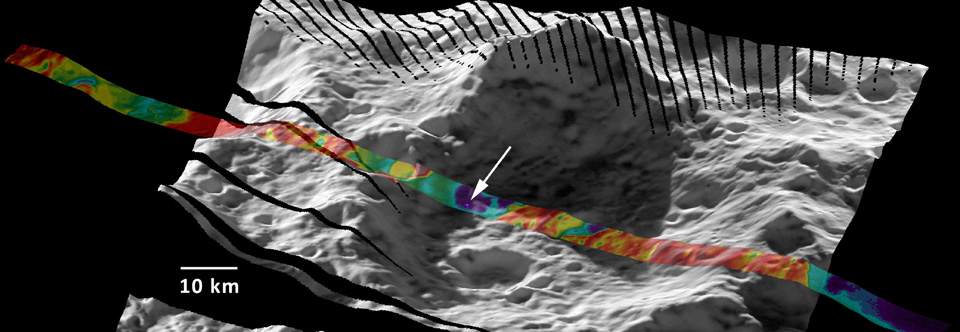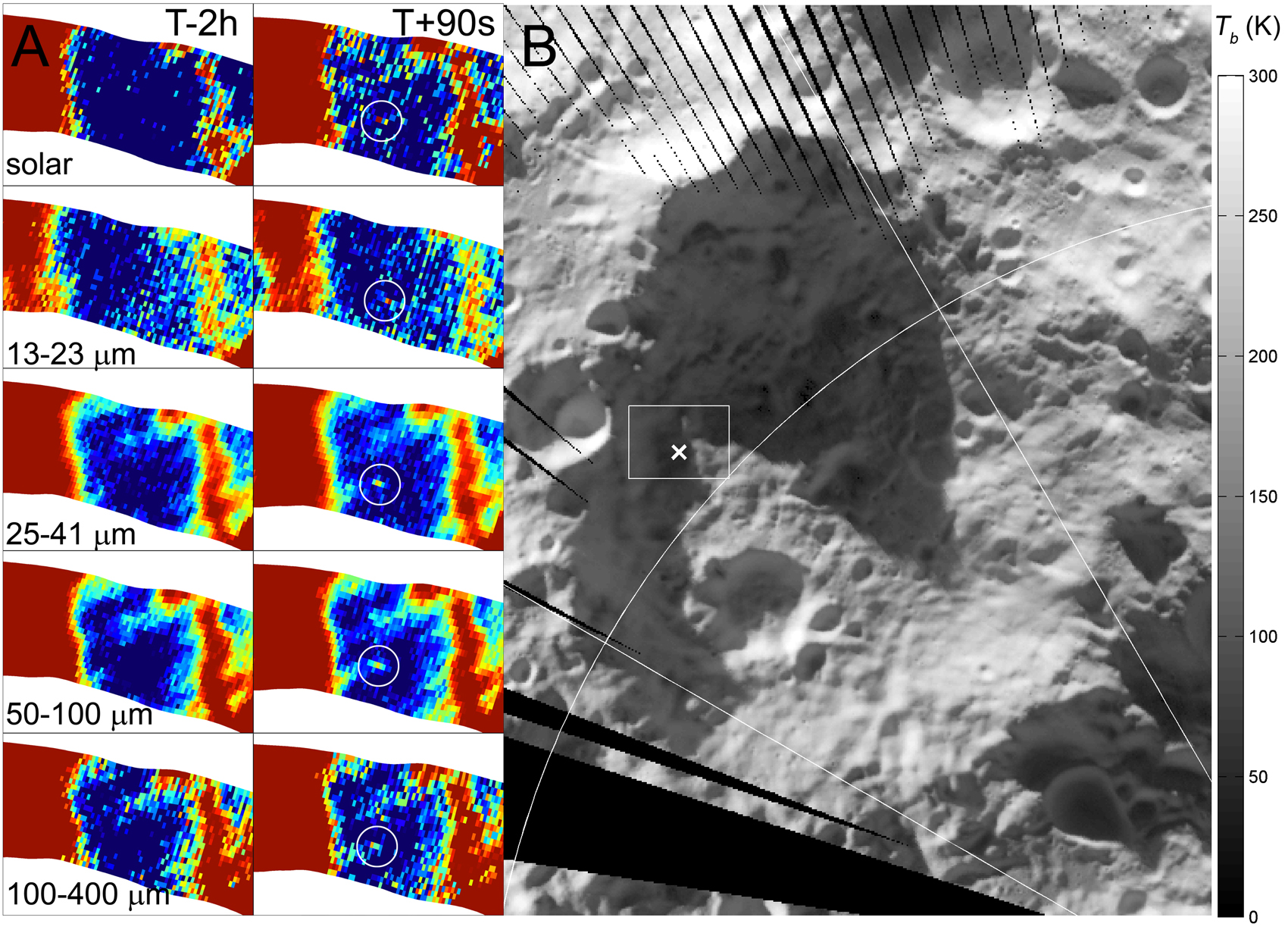By Michaela Shopland
The Diviner Lunar Radiometer team based at UCLA, played an integral role in the LCROSS experiment – not only did observations from their instrument help in the selection of the impact site, but the data they gathered after impact helped to eventually confirm the presence of water ice in the lunar surface.
LCROSS slammed into the Moon on October 9 2009, in a controlled impact designed to reveal once and for all whether water ice is present beneath its surface. The impact site was situated within a permanently-shadowed part of Cabeus Crater with an average annual temperature of 37 K (-393 °F), making it one of the coldest locations near the lunar south pole. Temperature data from Diviner had played a key role in the selection of Cabeus as the target for LCROSS, and in the lead up to impact, scientists and engineers worked together to ensure that Diviner was able to target the impact site for 8 orbits spaced roughly 2 hours apart, the closest of which passed by 90 seconds after impact.

Recent UCLA graduate Paul Hayne was monitoring the data in real-time as it was sent back from Diviner after the impact.
“During the fly-by 90 seconds after impact, all seven of Diviner’s infrared channels measured an enhanced thermal signal from the crater. The more sensitive of its two solar channels also measured the thermal signal, along with reflected sunlight from the impact plume. Two hours later, the three longest wavelength channels picked up the signal, and after four hours only one channel detected anything above the background temperature.”
Scientists were able to learn two things from these measurements: firstly, they were able to constrain the mass of material that was ejected outwards into space from the impact crater; secondly, they were able to infer the initial temperature and make estimates about the effects of ice in the soil on the observed cooling behavior.

Given that ice within soil pore spaces influences cooling because it uses up heat energy in the process of sublimating, and conducts heat more efficiently than lunar soil does, scientists were able to use Diviner’s measurements of cooling at the impact site to place constraints on the proportion of volatiles present.
“The fact that heated material was still visible to Diviner after four hours indicates LCROSS did not hit a skating rink – the ice must have been mixed within the soil. We estimate that for an area of 30 to 200 m2, the steaming crater could produce more than enough water vapor to account for what was observed by LCROSS over a four minute period.”
The observations provide strong evidence in support of the theory that there are volatiles ‘cold-trapped’ within permanently-shadowed regions on the Moon. The current thinking is that they were delivered there by impacts from icy bodies which themselves originated in the outer solar system.
The Diviner Lunar Radiometer is one of seven instruments aboard NASA’s Lunar Reconnaissance Orbiter. Principal investigator, David Paige, is a professor in the Department of Earth & Space Sciences at UCLA.
A full text version of the article published in Science can be found here:
Follow Iplex